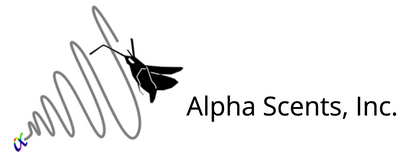Walnut Husk Fly - Why Its Relevant Right Now
The Damage - A Serious Pest of both Walnuts and Peaches:
- An invasive species that originated east of the Rockies
- Known to damage more than 2,000 species of plants and trees
- Now found in California and the Pacific Northwest
- Primarily a pest of walnuts, but also attacks peaches
Rhagoletis completa, or Walnut Husk Fly, interestingly “stain” the shell of walnuts, making it difficult for commercial orchards to sell in-shell products. Primarily infesting walnuts in California, these flies can cause damage in their adult stage as well as when they are maggots. Damages include shell staining (adult), husks sticking to shells (maggots), shriveled kernels (early season infestation). The Walnut Husk Fly is known to infest different varieties of walnuts including the black walnut and varieties in the English Walnut family.
Overview:
The Walnut Husk Fly produces one generation per year and overwinters in the soil beneath trees. It is a mid to late season pest. In walnuts, females deposit eggs in the husk. After hatching, maggots feed inside the husk staining the nutshell. Later infestations result in shriveled, darkened kernels that are susceptible to mold and other environmental stresses which ultimately lower yield and quality. In peaches, larvae feed internally on the fruit rendering it unmarketable. Walnut Husk Flies are easily identifiable with their green eyes and stripped wings. There is also a bright yellow spot right under the spot the wings meet.
Effective Interventions:
For effective intervention, it is necessary to monitor Walnut Husk Fly population levels. In general, constant monitoring is recommended. Contact local extension resources for specific regional recommendations regarding pest management strategies and control options.
Use at least two traps per 10 acres. Traps should be placed in high risk areas: trees that had walnut husk fly damage in prior years, damn areas, large shaded trees, or near black walnut trees. Traps should be hung in June as high as possible within an area of dense foliage on the north side of the tree. Check traps at least twice a week. Record the catch each time. As soon as flies are caught or whenever there is a sudden increase in trap catches, monitor for eggs.
Check with Cooperative Extension or Master Gardener for local information and recommendations. For cultural and physical controls, remove fallen infested fruit and remove the source of the infestation, probably a nearby walnut tree. Be aware that some pupae remain in the ground for more than one year, flies may continue to appear after the source is removed and control may be needed over several years.


